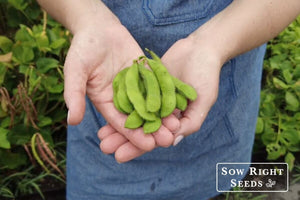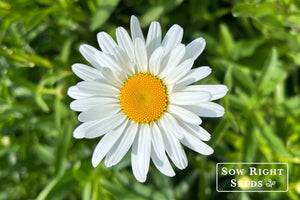How to Grow Strawflowers from Seed for Dried and Fresh Flowers
Are you looking for a cut flower that is beautiful, both fresh and dried? Something that is drought tolerant? Add colorful strawflowers to your flower garden. These heirloom favorites are growing in popularity and can be used in all kinds of flower arrangements. See how easy it is to grow strawflowers.

What are strawflowers?
As their name suggests, strawflowers have stiff petals like straw, but unlike straw, they are very colorful. Strawflowers come in a wide range of colors, from creamy whites to dark pinks. The flower heads can be one to three inches wide.
Strawflowers look like daisies with a center disk surrounded by petals. But the petals of strawflowers are actually bracts. The bracts unfurl to reveal the yellow flower inside. This is where the seeds will develop and eventually fly away like dandelion tufts.
Easy-to-grow strawflowers have a long vase life, making them a popular choice in flower farms. They also keep their color when dried and are used in dry arrangements.
How to Grow Strawflowers from Seed
Strawflowers can be started indoors or directly sown outdoors.
You can start strawflower seeds indoors six weeks before the last frost date. When sowing seeds outdoors, wait until temperatures exceed 60ºF and the soil is warm.
Tips for fail-proof strawflower seed germination
Strawflower seeds need light for germination. Gently press the seeds into the soil, but don’t cover them.
Warm soil between 60-75ºF is optimal for strawflower seed germination.
Water by misting and keep seeds moist until they sprout.
Once the strawflower seedlings have started growing, you can water from the bottom to prevent damping off.
Strawflowers started indoors can be transplanted outside when daytime temperatures are 60ºF and night are above 50ºF.

Growing Strawflowers
Strawflowers don’t require a lot of maintenance, but there are some things to know to make the most of your plants and produce the most flowers.
Sun
Strawflowers love the heat and sunshine. Plant them in a location that receives at least 6 to 8 hours of direct sunlight daily. Full sun will give you the most blooms.
Soil
Before planting strawflowers, prepare the soil with well-rotted compost. Strawflowers tolerate poor soil, but it needs to drain well. If you have heavy clay soil, you will need to amend it before planting.

Watering
Young strawflower seedlings need regular watering. Once the plants have matured, let the soil dry out between watering. Using soaker or drip hoses will get water to the roots without getting the leaves and flowers wet.
Spacing
Space strawflower plants 12 to 15 inches apart. This will allow them to have space to grow and have enough airflow. Airflow is especially important in humid climates.
Pruning and Deadheading
When strawflower plants are about 12 inches tall, you can cut out the center stalk to encourage side branching. This will result in more flowers and strong stems. If left alone, you will have one flower with a bigger stem until you cut it. Then, new shoots will grow.
Cut above a leaf node when deadheading and pruning. This leaf node spot is where new side shoots will grow.

Harvesting Strawflowers
Strawflowers are ready to cut when the stems are firm enough to stay upright. To test if they’re ready, hold the stem about eight inches below the flower. Wiggle the stem, and if the flower flops over, it’s not firm enough for cutting.
Strawflowers continue to open after they have been cut. So you can cut them before they have fully opened for a longer vase life. For fresh arrangements, harvest when 3 to 4 bract layers have opened. When cutting strawflowers for drying, harvest them when 2 or 3 layers of bracts have opened.
Harvest strawflowers early enough in the morning that the flowers are dry. Cut right above a leaf node, where more branches will grow.
Strawflower blossoms close up at night once they are fully mature. You may need to wait to cut them if you want to see at what stage they are at. Or let them sit inside in a bright location after cutting and see if they open up too much for drying.

Tips for Drying Strawflowers - Everlasting Flowers
Because of their ability to last for such a long time, strawflowers are also called Everlasting flowers. Strawflowers also keep most of their bright color when dried, which makes them a popular choice for crafts and dry flower arrangements. The bracts of strawflowers are already papery textured with a low water content, which makes them easy to dry.
Strawflowers continue to open after they have been cut.
Dried strawflowers that have fully opened will fall apart. To prevent them from fully opening, cut strawflowers when only two or three layers of bracts have opened.
Hang the flowers upside down to dry.
When strawflowers have fully matured, they produce seeds with parachutes like dandelions. These seeds can be saved and planted.
Strawflower FAQs
What are strawflowers good for?
Strawflowers make excellent dried flowers. They grow well in dry, warm climates and come in a range of beautiful colors.
Do strawflowers come back every year?
In zones 8-11, strawflowers can be grown as perennials. In zones with cold winters, strawflowers will need to be planted again in spring.
Do strawflowers bloom all summer?
Strawflowers love the heat and will continue blooming until the first frost. Keep cutting off spent flowers to keep them growing and blooming.
Do strawflowers like full sun or shade?
Strawflowers love full sun. At least 6 to 8 hours of direct sunlight daily. If grown in a shady area, they won’t have as many blooms.
If you’re looking for a colorful flower that thrives in heat and sun, plant strawflowers. These drought-tolerant flowers are easy to grow and will bloom all summer long. Excellent as a cut flower for both dried and fresh floral arrangements, strawflowers are worth the space in your garden.
2 comments
Popular Posts
-

Your First Time Growing Edamame? These Tips Guarantee Tasty Success
-

From Seed to Blossom: How to Grow and Care for Shasta Daisies






I received your comment that your seeds never bloomed. Were the seeds strawflowers? There could be several reasons that they didn’t bloom. The first thing could be sunshine. Strawflowers need full sun. Another reason could be temperature. They prefer warm temperatures above 70ºF. Soil nutrients also affect blooms. It does take 75 to 90 days for flowers to develop. I hope this helps pinpoint the issue with the lack of blooms.
My seeds never bloomed. Just green and tall
Leave a comment